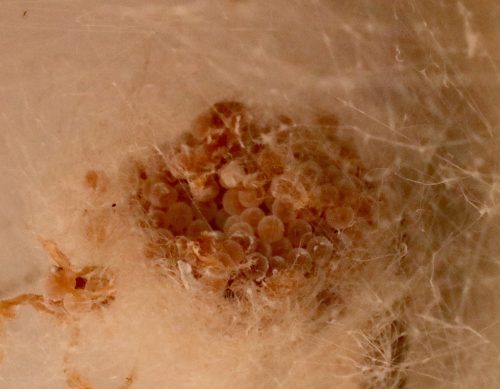Started a big project today — we have a fate in mind for all these spiders my lab is churning out. It will be an interesting fate for me, but alas, not at all healthy for the spiders. I’ll be keeping my Patreon followers informed, the rest of you will have to wait until the Fall.
I’m going to be redoubling my spider farming efforts for a while. I literally had baby spiders nesting in my beard this morning, and I just now had one crawl out of my shirt cuff. It’s a good thing I like the little fellas. Which makes it sad that this kind of a meatgrinder project. I’m going to be the Cruella DeVille of spiders.








